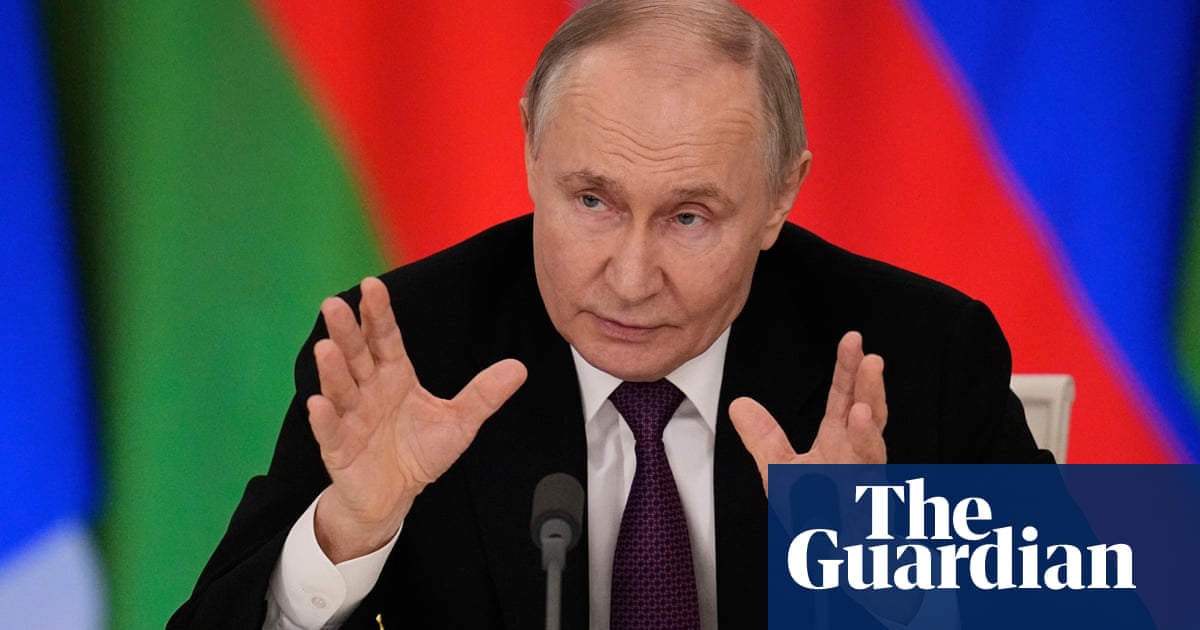Vladimir Putin has declared a three-day full ceasefire in the war withUkrainein May to mark the 80th anniversary of the victory of the Soviet Union in the second world war.
The Kremlin said the 72-hour ceasefire would run from the start of 8 May to the end of 10 May, and called on Ukraine to join it as well.
“All hostilities will be suspended during this period,” the Kremlin said in a statement.
“Russia believes that the Ukrainian side should follow this example.”
The Kremlin said that in the event of violations of the ceasefire by the Ukrainian side, Russian armed forces would deliver an “adequate and effective” response.
Moscow also said it was ready to engage constructively with international partners to address the “root causes” of the conflict.
For Russia, that terminology serves as code for some of its more hardline aims in a broader settlement – including preventing Ukraine from joining Nato, limiting the size of its military, and having a say over Ukraine’s domestic politics.
If respected by both sides, the May ceasefire would mark the first full ceasefire since the start of Russia’s full-scale invasion of Ukraine more than three years ago.
However, the temporary nature of the truce suggests that US efforts to broker a broader peace deal remain elusive.
Russia has previously rejected a US proposal for an immediate and full 30-day halt in the fighting by imposing far-reaching conditions. Ukraine has accepted it, Volodymyr Zelenskyy, the country’s president, has said.
Kyiv and Moscow had previously agreed to a partial Easter ceasefire, though each side accused the other of violating it. Since then, Russia has continued pounding Ukrainian cities, killing scores of civilians across the country.
Putin’s ceasefire announcement comes amid mounting US frustration with Russia over its continued attacks on Ukraine.
The US president, Donald Trump urged Russia on Sunday to stop its attacks in Ukraine while his top diplomatsaid the US might walk awayfrom peace efforts if it did not see progress.
“I was very disappointed that missiles were [launched] by Russia,” Trump told reporters as he travelled back to the White House. “I want [Putin] to stop shooting, sit down and sign a deal.”
Although Trump has repeatedly claimed he was close to ending the war, now in its fourth year, his efforts to broker a peace between Russia and Ukraine have so far yielded little result, stalled by Moscow’s hardline demands.
In a series of interviews with foreign media, Russia’s top diplomat, Sergei Lavrov, hinted that Moscow continued to maintain maximalist demands – conditions that both Ukraine and the US have repeatedly pushed back against.
In an interview published with the Brazilian outlet O Globo, Lavrov said that Moscow insisted on the international recognition of its hold over Crimea, as well as the entirety of Ukraine’s Donetsk, Luhansk, Kherson and Zaporizhzhia regions, as a condition for peace negotiations.
Speaking to CBS a day earlier, Lavrov also pushed against future western military support for Ukraine.
On 9 May, known as Victory Day, Russians celebrate the 1945 end of what they call the “Great Patriotic War.”. The Victory Day parade traditionally features heavy weaponry and is intended as a display of Russian military strength, reinforcing a narrative of resilience and national pride.
